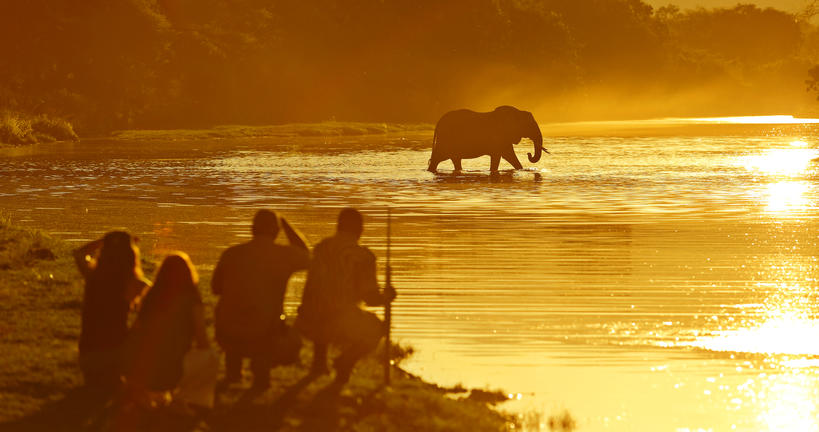Habitat
For a national park relatively small in size, the variety of habitat is surprisingly large. There are thickets, there are open plains, park-like woodland and rocky river gorges draining off the escarpment. Secret and new metres-wide channels of river waters, as the Zambezi continues her never-ending search for her journey to the ocean.
Seasons
Lower Zambezi National park is accessible from beginning of April to early January, however most camps close down with the start of the rains in early November.
The winter months of May to October are the best time for game viewing as no thick vegetation obscures the view. Late October temperatures can soar prior to the rains. Elephants are commonly seen crossing through the Zambezi often just their trunks and tails are visible. Tiger fishing is best in the hotter months from about September onwards.
Sightings
The thrill of gliding silently past a browsing bull elephant as you pilot your canoe near curious hippo with hats of purple-flowering water hyacinth is to enter a realm where every emotion is sharp, vivid and treasured. To enjoy a cold sundowner drink on the prow of a hippo-grazed lawn on an island mid-river, while the waters smokily change from Champagne pink to Burgundy red in front of you is bliss!
In later months as inland waters dry, the Zambezi becomes a regular draw. From her banks prides of lion may rest in the mid-day heat, clouds of bee-eaters give sudden bloom to a fallen tree and crocodiles patiently wait. Impala dine on dropped flowers beneath Sausage Trees and Elephant stretch to reach the apple-peel rings of the Winterthorn fruit. They are seldom better observed in the water than here in the Zambezi. There are many herds of Buffalo, Elephant, Zebra, Wildebeest and Impala. Kudu, Waterbuck are also plentiful.
The languid flight of the Heron contrasts the Kingfisher’s colourful dash, the Ox-pecker’s grip on a buffalo’s ear and the Falcon’s hovering stoop.
With nightfall comes the Leopard’s sawing cough, the Lion’s territorial claim and guilty heckles of greeting Hyenas followed by the Hippo’s booming snorts.
Game Management Area Lower Zambezi National Park
Dieses Camp befindet sich in der sogenannten Game Management Area des Lower Zambezi Nationalparks, das sind Pufferzonen, die rund um die Nationalparks angesiedelt sind. Diese Zonen ermöglichen, dass sich die Tiere frei zwischen der Game Management Area und dem Nationalpark bewegen können und die Populationen sich dadurch im Nationalpark vermehren.
Die Dichte an Wildtieren ist in diesen Zonen nicht so groß wie in den Nationalparks selbst, aber es gibt dennoch viele Wildtiere die sich zwischen den Gebieten bewegen.
Die meisten Lodges und Camp, die in der Pufferzone liegen, führen den Großteil ihrer Safariaktivitäten im Nationalpark durch.



